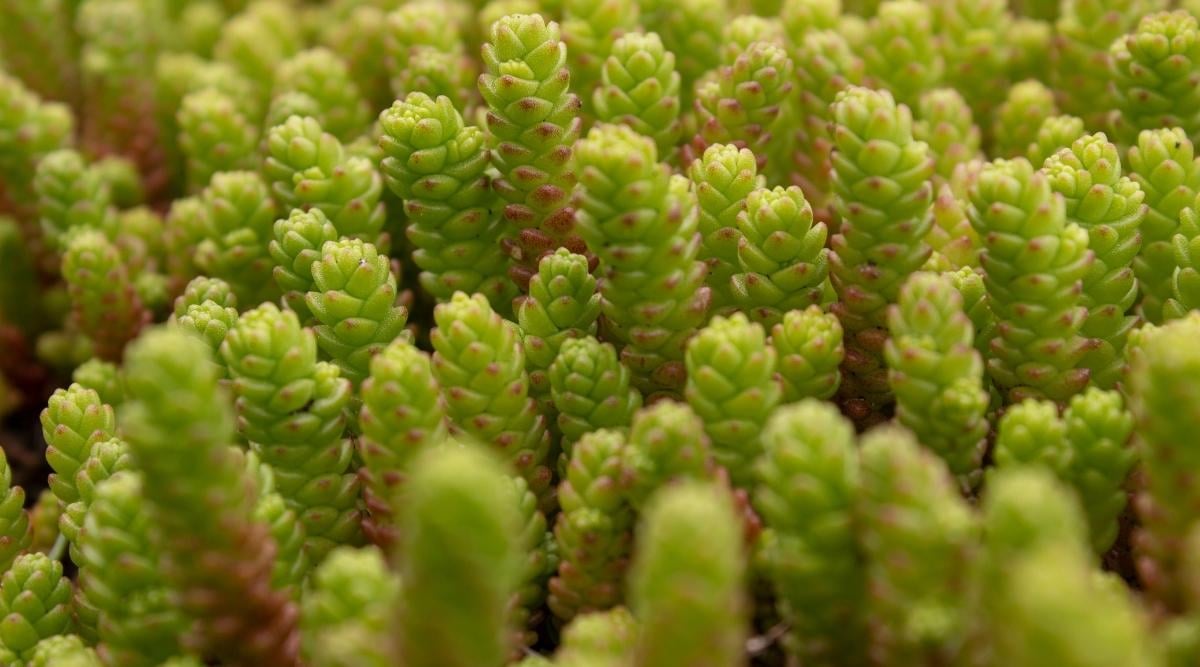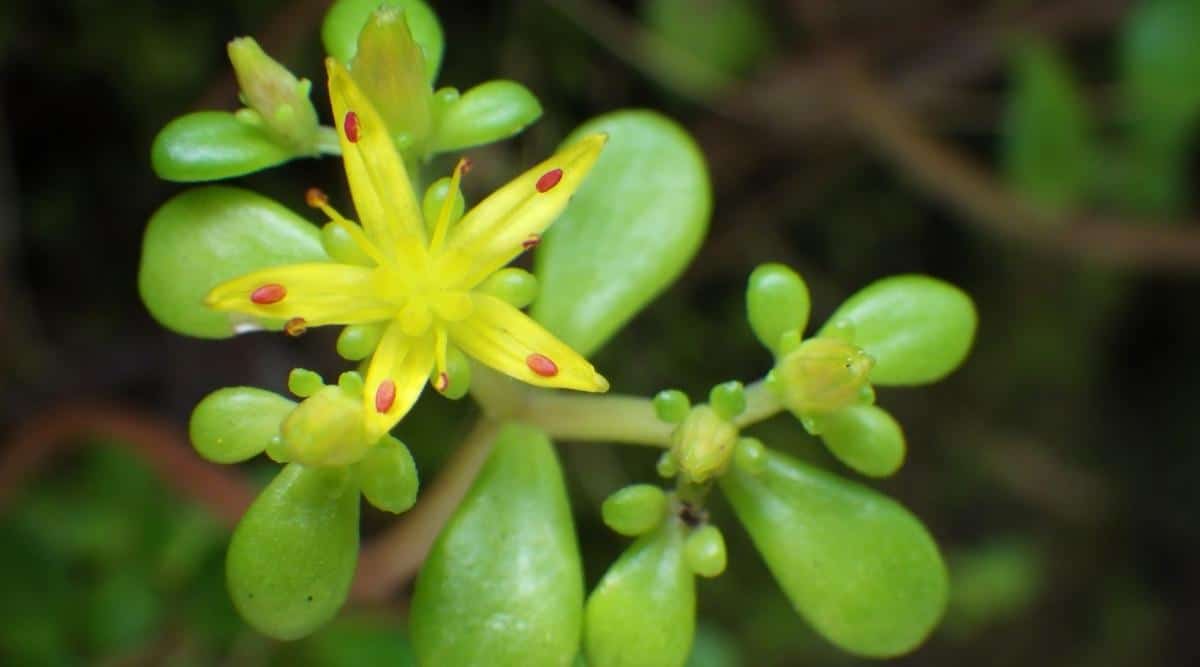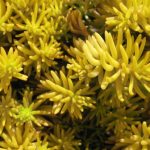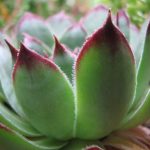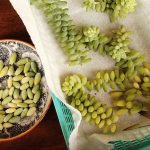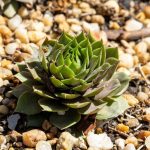If you have a penchant for trendy gardening or simply enjoy perusing Pinterest, you must have encountered Sedum species – the versatile succulents that add charm to any garden. While they may not steal the show like other succulents, they bring value as they cascade out of pots or act as ground cover in rock gardens or xeriscapes.
Sedum plants, part of the Crassulaceae family, are characterized by their thick, succulent leaves arranged uniquely. This family, known as the Stonecrop family, thrives in rocky outcrops. Apart from Sedum, other popular houseplants like kalanchoe, “hens and chicks,” and various succulents also belong to this family.
It’s worth noting that what was once classified under the Sedum genus, particularly the upright succulent shrubs known as showy stonecrops, such as the famous ‘Autumn Joy,’ are now categorized under the genus Hylotelephium.
Sedums are celebrated for their resilience to heat and drought, making them ideal for rock gardens and appealing to pollinators like butterflies and bees. They are easy to propagate, making them a great choice for novice gardeners. Keep reading to discover more about these versatile plants!
Sedum Plant Overview
|
Plant Type
Herbaceous Perennial
Native Area
North America, Asia, Europe
Hardiness Zone
USDA 3-11
Season
Summer
Exposure
Full Sun
Maturity Date
Varies
Growth Rate
Plant Characteristics Moderate Plant Spacing 12-24 inches Planting Depth Surface Sow Plant Height 2-10 inches Watering Requirements Low Pests and Diseases Few Problems Tolerance Cool to Warm Climates Soil Type Mostly Sandy or Rocky, Shallow Soil Attracts Bees, Butterflies Plant With Xeriscape Plants Don’t Plant With Competition intolerant plants
Family
Crassulaceae
Genus
Sedum
Species
album, makinoi, lineare, ternatum Plant History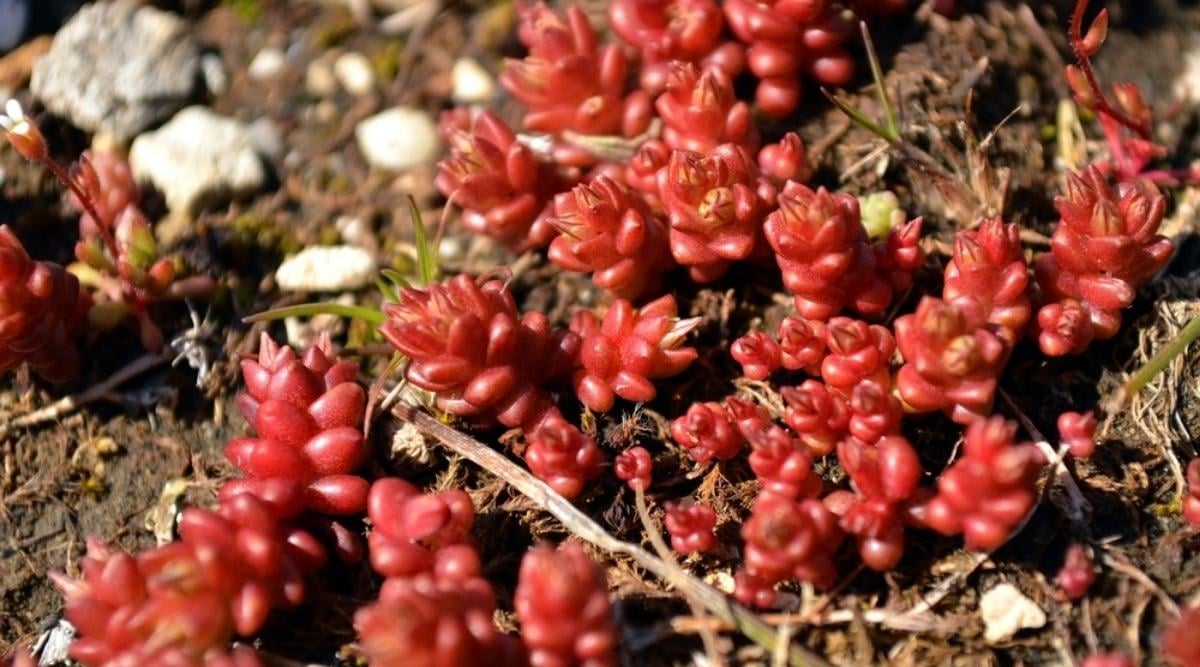  Sedums have origins across the globe, with their ornamental use dating back to unclear times, although there are records of some species being used in various medicinal and herbal practices over the years. S. sarmentosum had historical application in Asian traditional medicine for treating chronic inflammatory ailments like viral hepatitis. In numerous cultures, different Sedum species have been included in salads and soups. For instance, in East Asia, the leaves and flowers of S. sarmentosum are part of a popular vegetable dish called “namul.” In salads, the Dutch incorporated this species due to its tangy flavor. Dating back to the 19th century, German naturalist and explorer Alexander von Humboldt documented the use of S. reflexum in soups, while North Americans added S. rhodanthum to their salads. While searching for information on Sedums online, confusion may arise due to some garden plants that were previously classified under the Sedum genus now being reclassified into their own genus, like the upright succulent shrubs, notably ‘Autumn Joy’, which are now categorized under the genus Hylotelephium. Despite this shift, many still refer to them as “sedums.” In the U.S., some Sedum species are native to specific regions, while others have naturalized outside gardens. Wild species can also cross-pollinate, further complicating plant identification. PropagationSedums are incredibly easy to propagate, making them ideal for novice plant propagators. Propagation can be done through seeds, leaf cuttings, and stem cuttings. Here are some tips for each method: Starting Sedum From Seed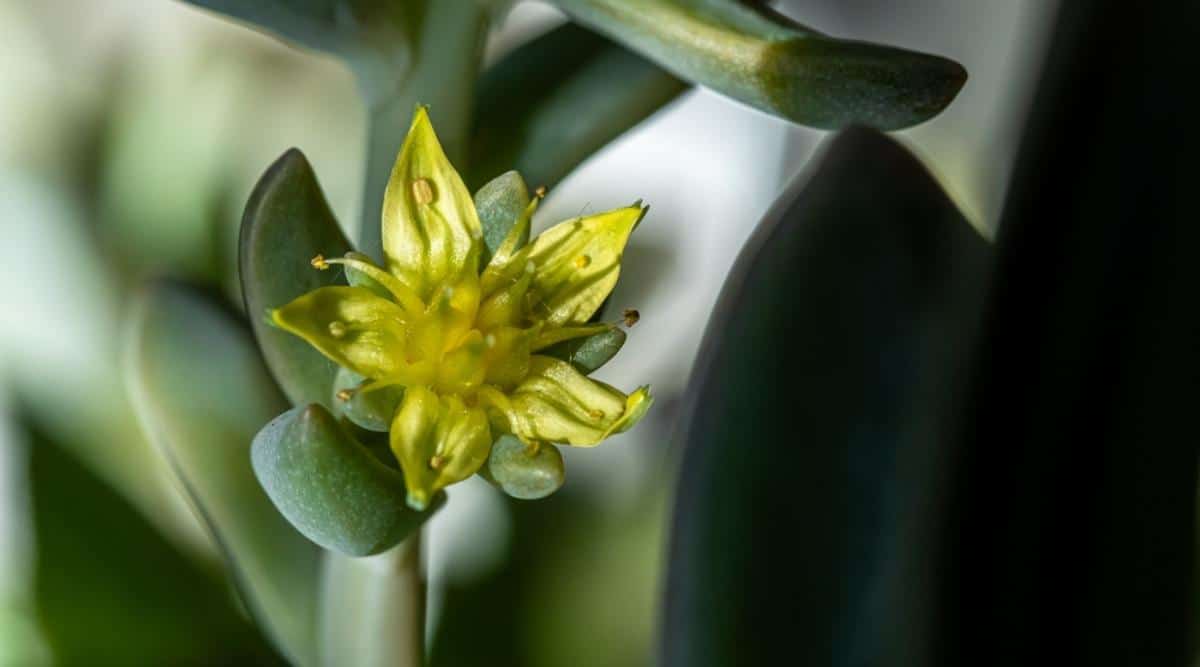  Although less popular than cuttings, starting seeds can be straightforward but slow. Sedum seeds are minuscule, so surface sow them in a pot with a moist starting mix. Gently press the seeds on the surface and dust with vermiculite to retain moisture. Water by misting or bottom watering until germination, maintaining moisture levels to prevent drying out. Germination can take up to a month, requiring daily monitoring of moisture levels and using a humidity dome to retain moisture. Clear plastic covers or repurposed items can serve as makeshift humidity domes. Propagating Sedum by Cuttings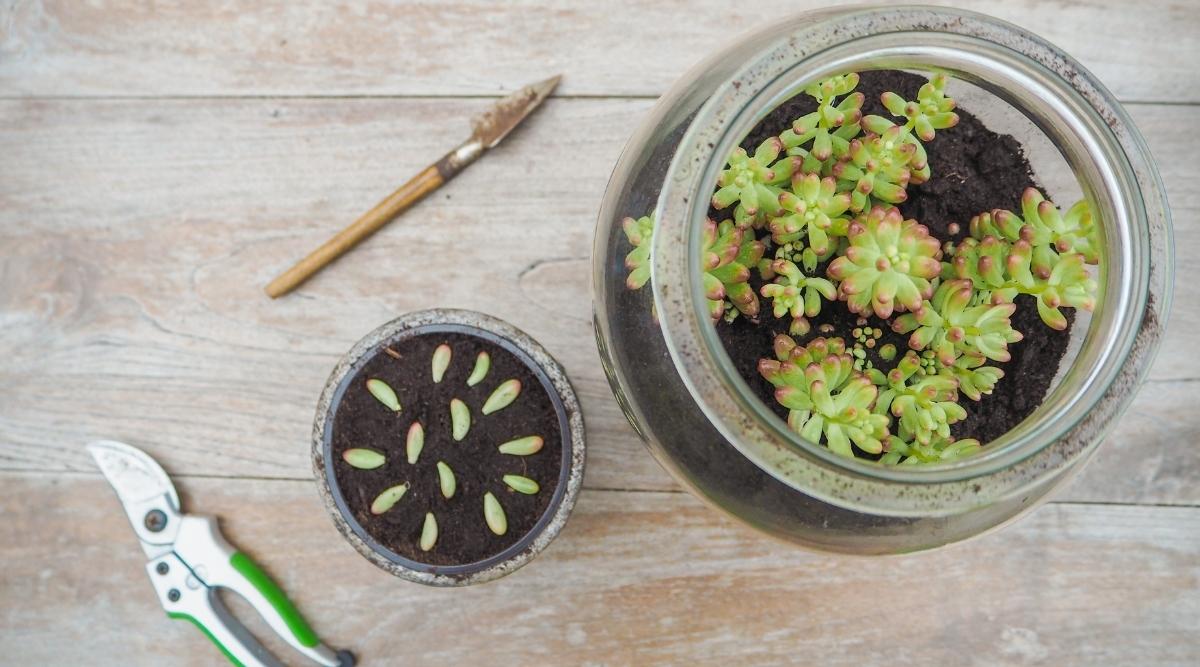  Exploring sedum propagation reveals that it’s widely preferred for its easy rooting. The two primary options available are: 1) stem cuttings and 2) leaf cuttings. For stem cuttings, select a non-flowering, healthy stem with at least four leaves. Trim the stem with clean shears, remove the lower leaves and any flowers, leaving a few intact. Place the stem in water or moist soil, ensuring the two leaf nodes are submerged and the cutting remains moist for successful rooting. When using leaf cuttings, pluck a succulent leaf and insert it into damp soil. Keep the soil consistently moist until roots emerge, usually within 3 to 4 weeks. Outdoor planting of Sedum should be timed after frost subsides. Most Sedums are deciduous in moderate climates, shedding leaves from Summer to Fall. Growing Sedum with SuccessSedum species thrive in well-drained, dry soil and sunlight. Ensure they receive at least 6 to 8 hours of direct sunlight daily, with part sun also acceptable if the soil drains well. These plants fit perfectly in xeriscape, rock, or green roof gardens due to their low water needs. Pinching back leggy growth can maintain tidy plants, and removing old growth post-fall helps prevent disease. Popular Sedum VarietiesAmong numerous sedum species and cultivated varieties, here are some popular options worth considering: Sedum albumKnown as Hardy Baby Tears or White Stonecrop, this variety is favored for green roofs or as a houseplant. With green leaves and color-changing flowers, it’s a rapid grower perfect for specific climates. S. makinoi ‘Ogon’This variety offers yellow-green edible leaves until flowering. ‘Ogon’ Sedum stands out with its colorful appearance compared to other varieties. Loving the afternoon shade, this plant thrives in some climates, forming a dense mat that reaches about 2 inches in height and spreads up to 12 inches, showcasing gorgeous yellow-green flowers. S. morganianum: Donkey’s Tail or Burro’s Tail, with its evergreen tropical foliage, features trailing stems adorned with succulent blue-green leaves. The stems can grow up to 4 feet long, producing a spiral pattern reminiscent of braiding. Although it may bloom with showy pinkish-red blossoms in the Summer, indoor growth could limit blooming potential. Known for its affection for rocky areas, S. ternatum or Woodland Stonecrop displays white, five-pointed flowers along its creeping stems that root at the nodes, leaving tiny plantlets during the Fall damp season. The striking foliage color defines S. ussurience ‘Turkish Delight’, with burgundy leaves and deep red flowers. Ideal for rock gardens and containers, this species stays compact, reaching a modest height and width. Native to eastern Asia, S. lineare Carpet Sedum thrives in green roof gardens. Growing leggy without full sun, this evergreen variety showcases yellow blooms in a linear leaf arrangement. S. spurium or Caucasian Stonecrop boasts evergreen, sprawling growth, featuring flattened, toothed leaves with a reddish edge. As Fall sets in, the lower leaves drop, giving way to newer burgundy ones. Popular varieties include ‘Red Carpet’, ‘Tricolor’, and ‘Dragon’s Blood’. Mat-forming S. rupestre Rocky Stonecrop hails from Europe, spreading up to 24 inches wide with cylindrical, gray-green leaves that turn reddish in cool climates. Yellow flowers bloom in Summer, with the ‘Angelina’ variety sporting bright yellow leaves. When it comes to Pests and Diseases, while sedums are not commonly affected, mealybugs or aphids could pose a threat. The key is to ensure proper planting conditions to prevent root or crown rots caused by fungal or bacterial infections, typically thriving in cool, wet environments. Planting in dry or well-draining areas can mitigate these issues, emphasizing the importance of suitable growing conditions for Sedum species to thrive. Sedum Plant Care Tips
How much water does sedum need?
|

